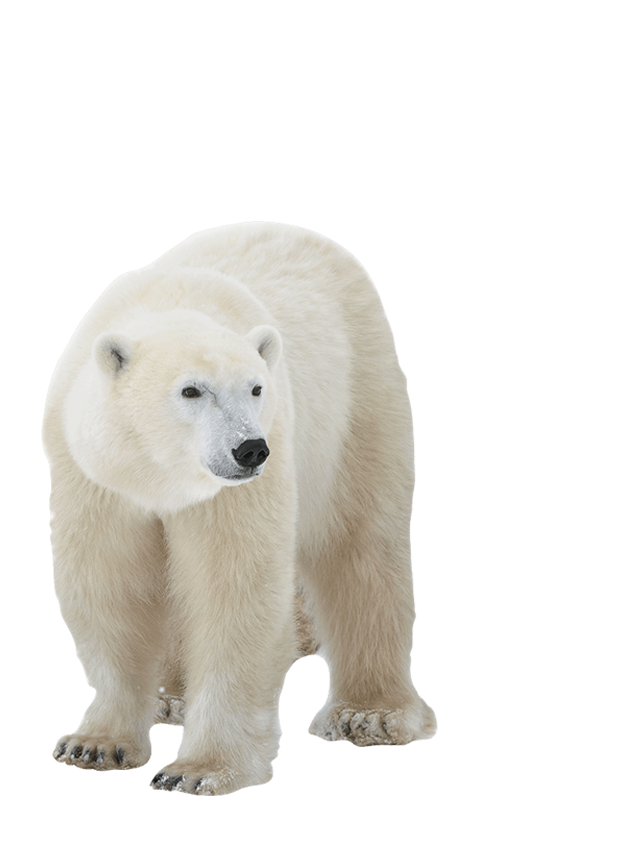
The Arctic National Wildlife Refuge is home to one of the world’s most recognizable carnivores – the polar bear. The polar bear is known for both its fierce hunting skills and close family bonds. It is a “keystone” species in the Arctic ecosystem, meaning that its presence helps to hold the entire food web in balance.
Polar bears spend so much of their life out on the sea ice that they are actually classified as marine mammals - just like whales and seals! They have many unique features to help them survive the harsh landscape. They have two thick coats of fur, a dense insulating undercoat and an oily, rough outer coat. Each strand of fur in their outer coat is hollow, providing even more insulation for the bears. Under all that fur, their skin is black, helping to absorb and hold onto any heat they can get from the sun. While their fur is actually clear, it appears creamy white and lets them blend in with their snowy surroundings. Extremely large feet help polar bears distribute their weight while walking on sea ice, reducing their risk of falling through to the water underneath. These large paws also help the bears move through the water quickly when they do choose to swim. They’ve been recorded swimming at speeds up to 6 miles per hour.
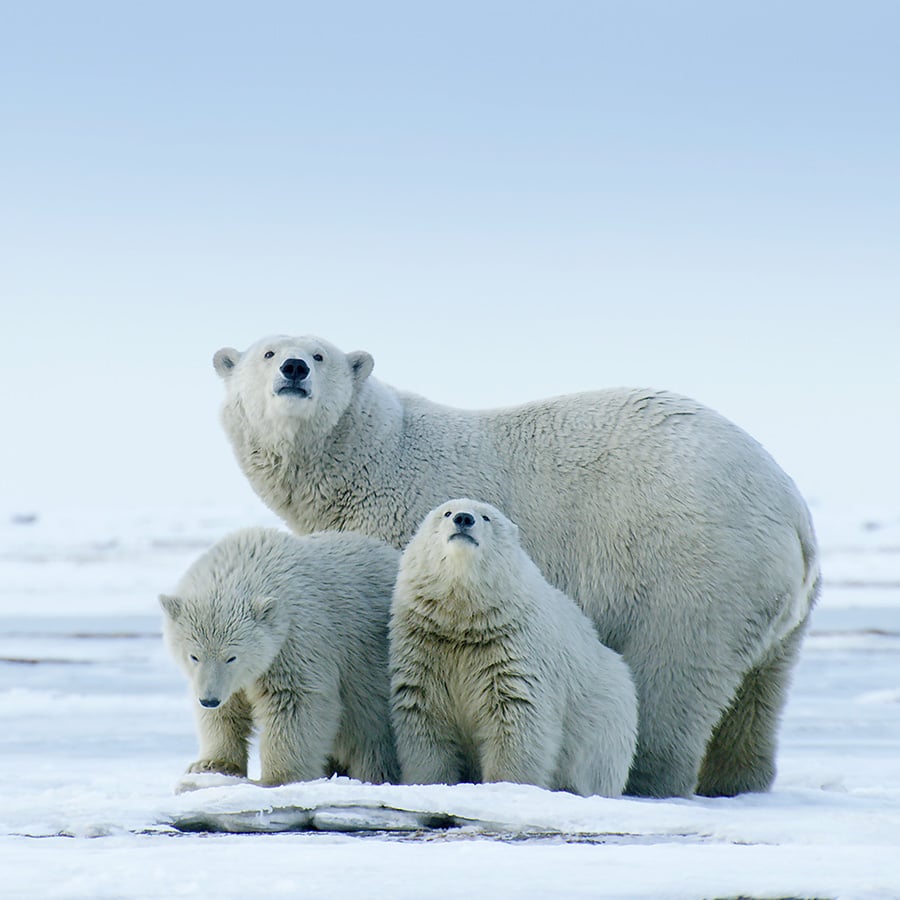
Polar bears also have very sensitive noses. They primarily track down their meals by smell, and can sense prey from more than 20 miles (32 kilometers) away and through three feet of ice and snow. Their favorite prey is seal. The bears use their sense of smell to find active seal breathing holes in the ice and sit in ambush, waiting for an unsuspecting seal to steal a quick breath of air. The polar bear uses its powerful paws and long claws to pull the animal out of the water. While seals make up most of their diet, polar bears will not turn down many food sources. They’ll hunt birds, small mammals, and shellfish, and will scavenge any carcasses they come across.
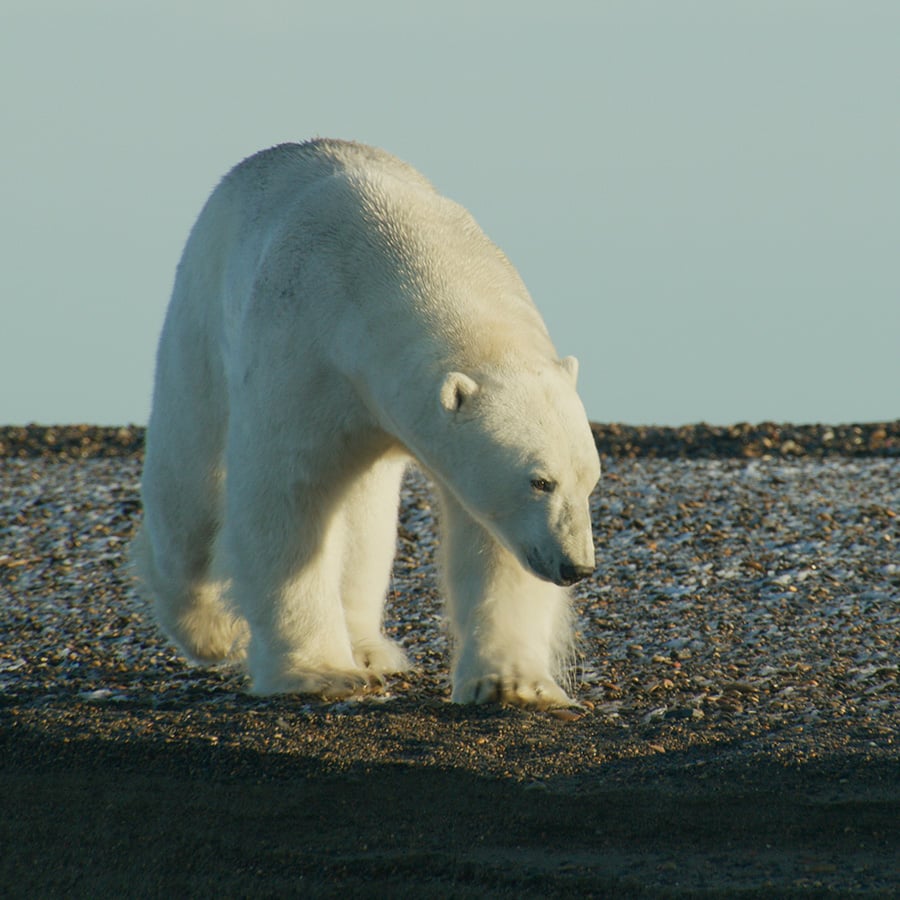
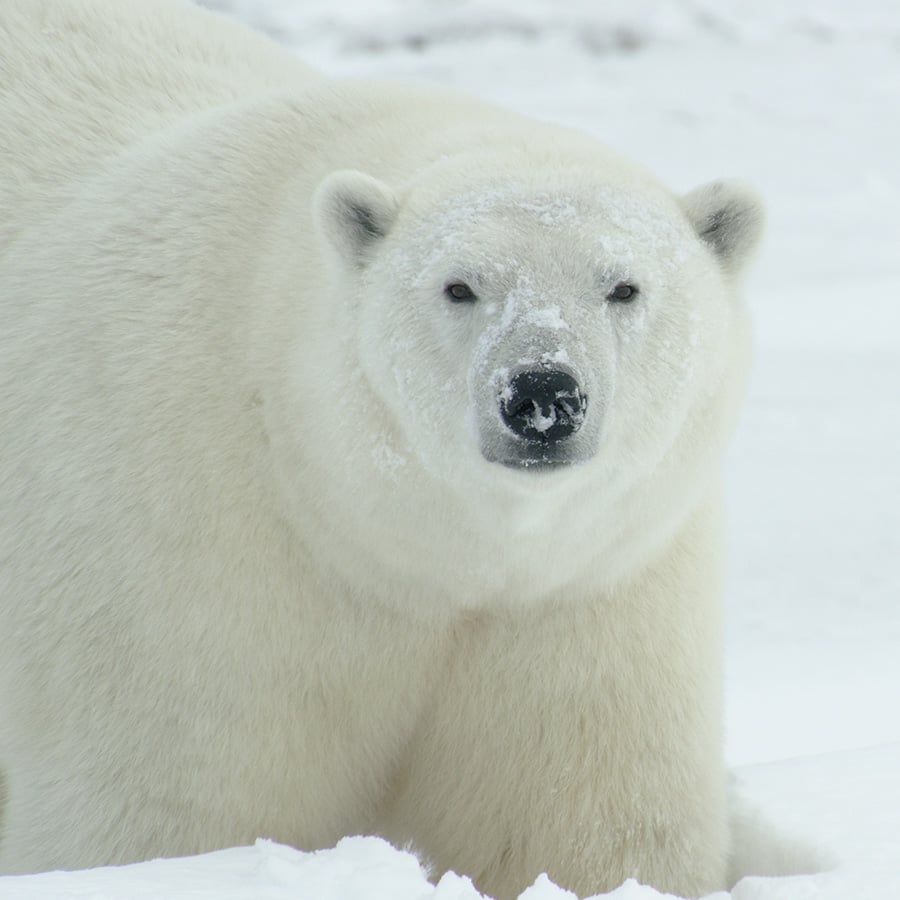
In late autumn, pregnant females dig dens in the deep banks of snow along the coast. The cubs are born during the winter, and the dens keep them safe and warm until they grow enough to survive the Arctic temperatures. When polar bears are born, they only weigh only about a pound. But polar bear milk is almost 30% fat, and helps the cubs put on weight quickly. They can gain up to 20 pounds within just a few months, and are usually ready to leave the den by March. Mother bears stay in the den with them the whole time, not even leaving to hunt. They can lose up to 300 pounds before the whole family emerges in the spring.
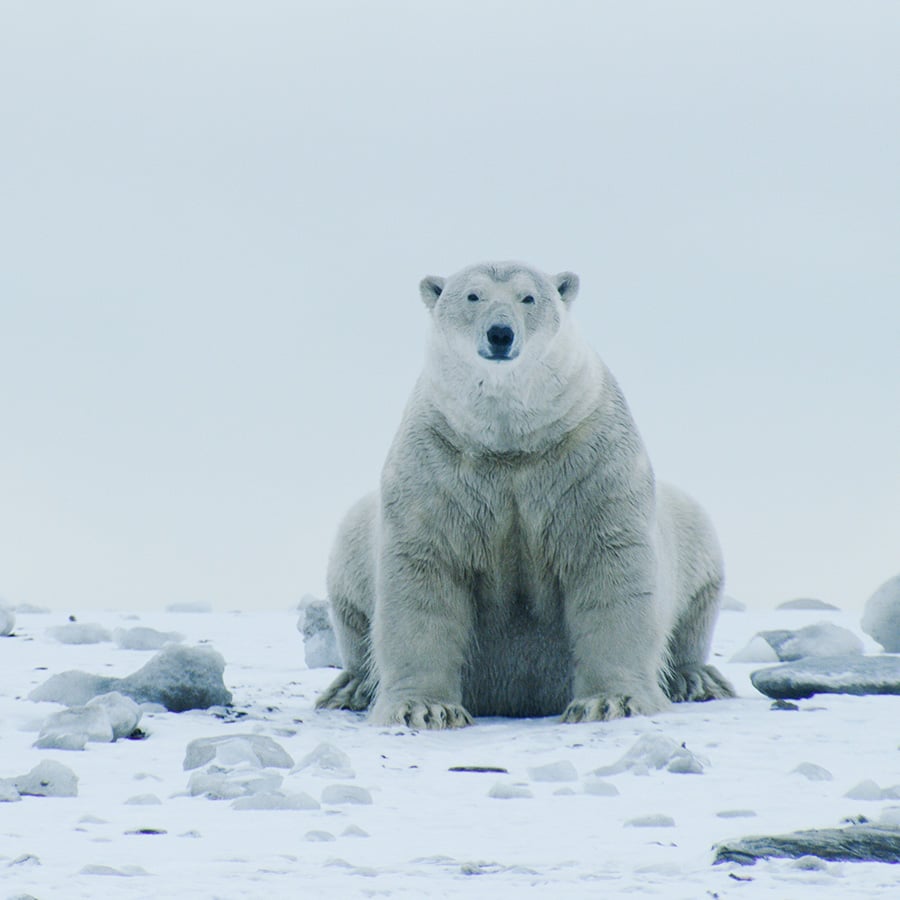
Every part of the polar bear’s life is tied to the ice and snow of the Arctic, from the dens in which they’re born to the hunting grounds they roam. As the global average temperature continues to rise, the entire species is at greater risk of extinction. There is already 40% less sea ice in the Arctic than in 1980, and current research predicts that 2035 may be its first fully ice-free year.
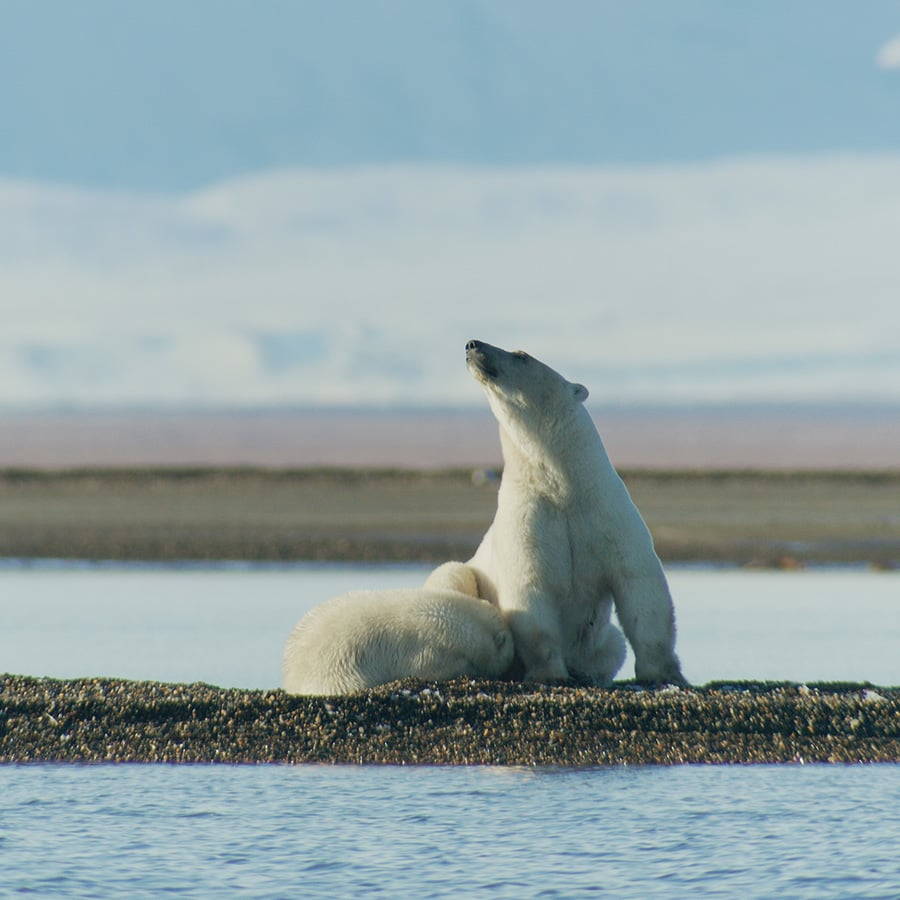
Without sea ice, polar bears have limited access to seals and will likely face long periods of starvation. In addition, oil and gas drilling threatens the survival of polar bears. This threat is particularly high for nursing mothers, who may abandon dens in response to nearby drilling and surveying activity. But you can still help protect the future of this unique Arctic species. Visit our Take Action page to learn more.
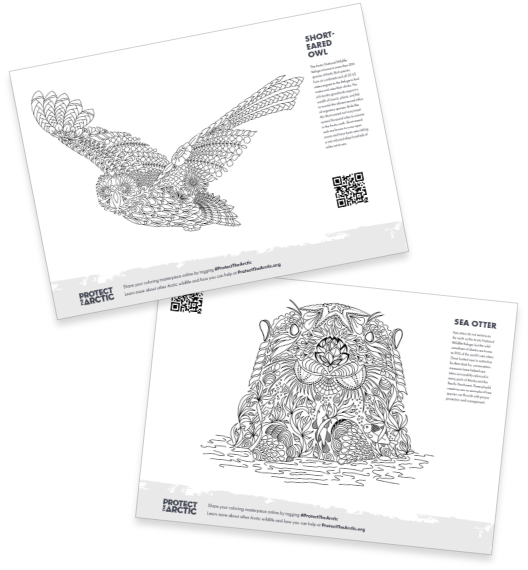
Download our pack of 6 Arctic animals to color and share. Polar Bear, Arctic Fox, Caribou, Peregrine Falcon, Short-Eared Owl, or Sea Otter… Which is your favorite?